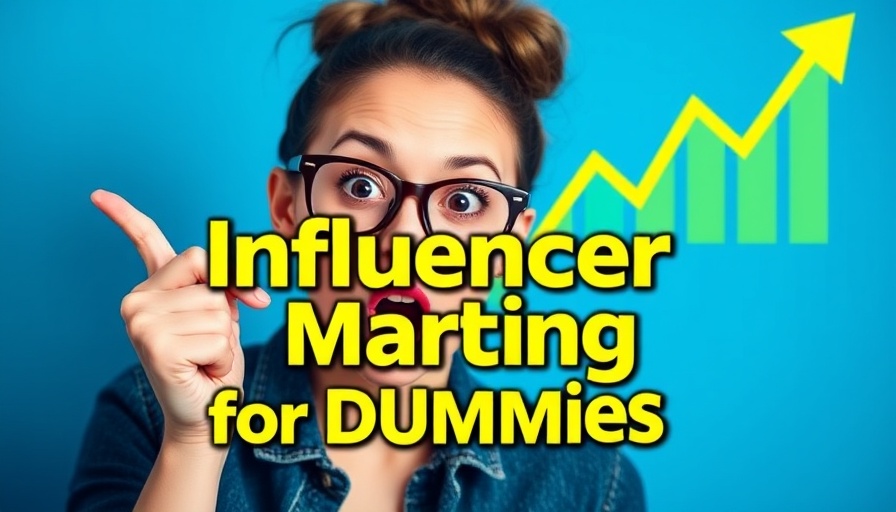
Unlock the Power of Influencer Marketing to Boost Your Business
Imagine you’re looking for someone to fix your plumbing. Your bestie enthusiastically recommends a plumber who did an awesome job. Almost immediately, you trust your friend’s recommendation and call that plumber. That’s the crux of influencer marketing! Businesses worldwide tap into this trusted relationship between influencers and their followers to generate millions in revenue. Let’s dive into how you can leverage influencer marketing to grow your business profitably.
In 'How To Grow Your Business Using Influencer Marketing', the discussion dives into leveraging influencers effectively for business growth, prompting us to explore key insights and extend our analysis.
What is Influencer Marketing?
At its core, influencer marketing is a partnership between businesses and individuals with a significant following on social media, known as influencers. These influencers promote a business’s products or services in exchange for compensation. The expectation is that, since influencers have cultivated a strong relationship with their followers, their endorsement will drive sales. But how do you make sure it works for you?
Avoiding Common Influencer Marketing Mistakes
One major pitfall many businesses fall into is not conducting adequate research on potential influencers. Choosing an influencer simply for their follower count can lead to disappointing results. Also, many fail to negotiate reasonable terms that respect the influencer's worth. Let’s look at how to choose wisely.
Criteria for Selecting the Right Influencer
When scouting for influencers, consider three vital factors: follower count, relevance to your product or service, and engagement rate.
1. Follower Count: Influencers come in various categories—nano, micro, mid-tier, macro, and mega—ranging from 1,000 to millions of followers. Nano influencers might have fewer eyes on your brand, but their intimate follower relationships often translate to higher trust and engagement.
2. Relevance: Align your business with influencers related to your field. For example, if you sell gardening supplies, collaborating with a gardening expert helps target the right audience.
3. Engagement Rate: Trust is thicker than water, but engagement is thicker than followers! A high engagement rate indicates that followers really interact with the influencer’s content, which is crucial. A good engagement rate varies per follower count, so research benchmarks to decode what works.
Finding the Right Influencers
Once you’ve set your criteria, how do you find influencers? The quickest method is to search relevant hashtags on platforms like Instagram. However, there are numerous tools and sites designed to connect you with the right influencers. Use them wisely. Provide an authentic and personalized outreach strategy, so influencers know you're serious about working together.
Crafting the Perfect Outreach Message
Your outreach matters! Include three essential components in your initial message:
- Tailored comment on their recent content.
- A brief introduction of who you are and why you're reaching out.
- A request to learn about their rates.
Adding a voice note to your DM could give you an edge. Show them you’re real and ready to engage!
Negotiating Deals with Influencers
Understand that influencers make their living through these collaborations, so lowballing them with products in exchange for promotion isn’t the way to go. On average, you might pay:
- Nano Influencers: $10 to $100 per post
- Micro Influencers: $100 to $500 per post
- Mid-Tier Influencers: $500 to $5,000 per post
- Macro Influencers: $5,000 to $10,000 per post
- Mega Influencers: $10,000 or more per post
Make sure to articulate your expectations clearly, specifying what you’ll get for your investment.
Tracking the Success of Influencer Partnerships
Once the campaign launches, don’t disappear! It’s crucial to monitor its success. Use UTM codes to track clicks and sales attributed to the influencer’s promotion. This will help you analyze how effective the partnership was and make informed decisions for future collaborations.
Nurturing Leads for Long-Term Success
After gaining sales from an influencer, set up a robust lead nurturing system. Use effective tools to automate follow-ups, keeping your relationship with customers strong. Marketing Tank is a fantastic all-in-one solution that can help streamline this process!
In today’s digital world, social media marketing strategies are vital. Influencer collaborations are an exciting avenue to boost your online presence and drive sales. So, what's stopping you? Now's the time to explore influencer marketing and see how it can elevate your business!
Call to Action: Get started on your social media influencer marketing strategy today! Don’t let this opportunity pass you by.
 Add Row
Add Row  Add
Add 




Write A Comment